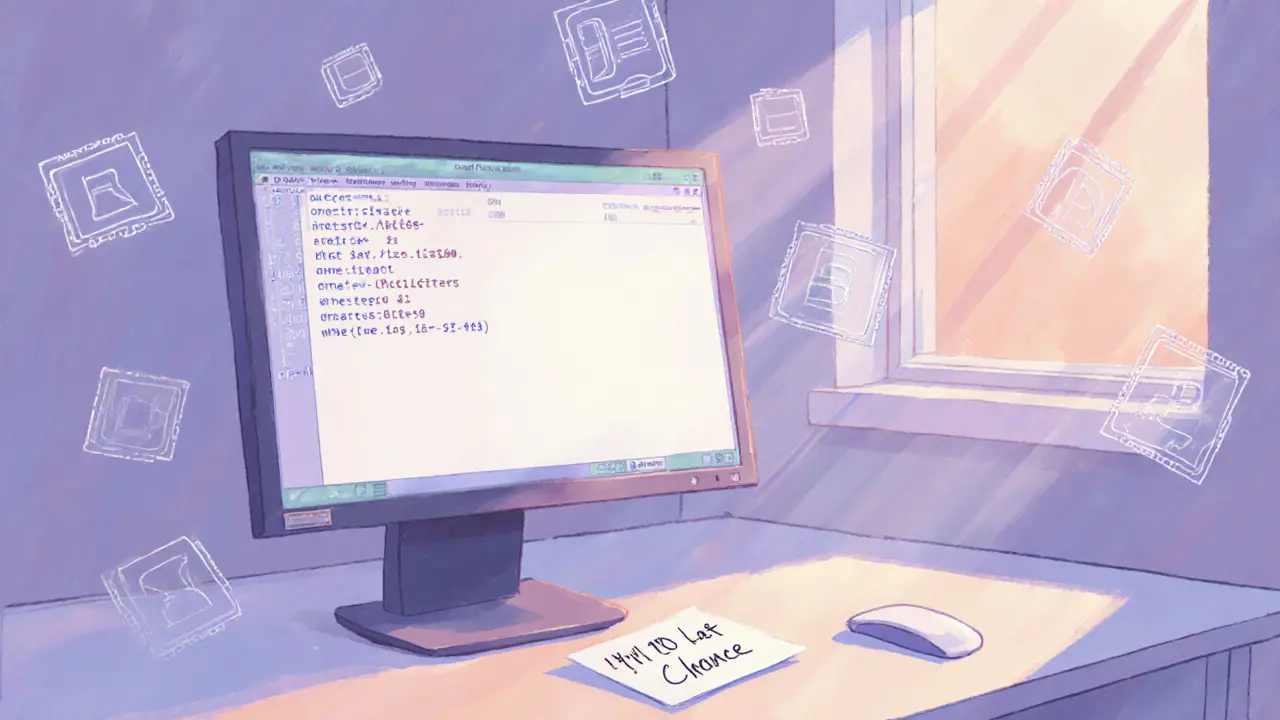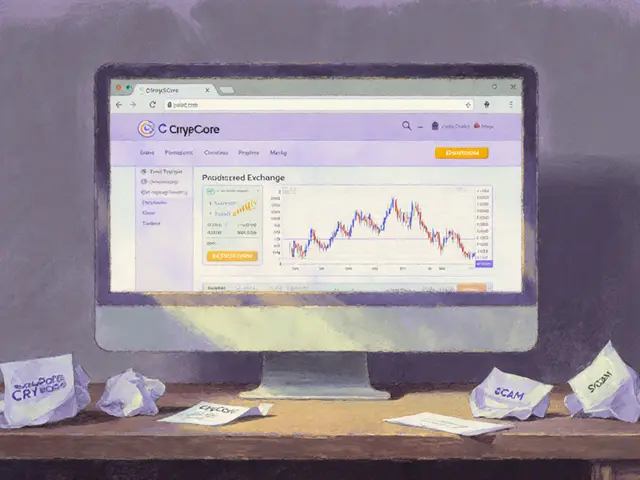PHA Airdrop by Phala Network: How to Claim 30 PHA Tokens and What You Need to Know Before November 20, 2025

Phala Network Hardware & Deadline Checker
Check if your computer qualifies for the Phala Network PHA airdrop before the November 20, 2025 deadline. This tool will:
Your Airdrop Status
Check your system requirements and deadline below
Hardware Requirements
- Modern Intel CPU (2016 or newer) with Intel SGX support
- AMD CPU with AMD SEV support
- At least 8GB RAM
- 20GB free disk space
- Stable internet connection
Before You Start
Critical Warning
The airdrop deadline is November 20, 2025. If you don't complete the setup before this date:
- There's no guarantee you'll receive your 30 PHA tokens ($3.09 value)
- Phala Network will transition to Ethereum Layer 2 after this date
- Unclaimed tokens may be redistributed or burned
What to do now:
- Check if your CPU supports Intel SGX or AMD SEV
- Enable it in your BIOS/UEFI settings
- Download the official miner software from phala.network
- Complete the setup before November 20, 2025
On November 20, 2025, Phala Network’s Polkadot parachain slot expires. That’s not just a technical deadline-it’s the last chance to claim your PHA airdrop tokens before the network fully shifts to Ethereum Layer 2. If you haven’t acted yet, you’re running out of time.
What Is the Phala Network PHA Airdrop?
The Phala Network PHA airdrop isn’t like the usual social-media-based giveaways. You don’t just connect your wallet or retweet a post. To get your 30 PHA tokens, you need to run a real miner node on your computer. This isn’t optional-it’s the entire point. Phala built its privacy-focused blockchain on Trusted Execution Environments (TEEs), meaning your data stays secret even when processed on public networks. That kind of tech doesn’t work without people actually running the hardware that makes it possible.So the airdrop rewards people who help secure the network by running nodes. Each qualifying participant gets exactly 30 PHA tokens. At today’s price of $0.1029, that’s worth about $3.09. It’s not a fortune, but it’s not nothing either-especially if you already have compatible hardware.
How to Qualify for the PHA Airdrop
Here’s what you actually need to do:- Check if your computer supports Trusted Computing (Intel SGX or AMD SEV). Most modern Intel CPUs from 2016 onward have it, but it’s often turned off by default. You’ll need to enable it in your BIOS/UEFI settings.
- Download the official Phala miner software from the Phala Network website. Avoid third-party sites-scammers love to copy these pages.
- Run the setup script. It’s command-line based, so you’ll need basic terminal skills. The process takes about 30 minutes to complete.
- Once the node is live, submit a screenshot of the running miner through the official airdrop portal. The system checks your node’s uptime and proof-of-work output.
- Wait for confirmation. Rewards aren’t sent immediately. They’re locked until the pre-mainnet ‘Darth Vader’ phase launches.
That’s it. No KYC. No wallet connection. Just hardware, software, and patience.
Why This Airdrop Is Different
Most airdrops are designed to spread tokens as widely as possible. Phala’s is designed to filter out the casuals. If you’re not willing to dig into your BIOS, run terminal commands, or troubleshoot hardware issues, you probably won’t qualify. That’s intentional.Phala’s whole model relies on decentralized, privacy-preserving computation. If anyone could claim tokens without doing the work, the network wouldn’t be secure. This isn’t a marketing stunt-it’s a bootstrap mechanism. The people who earn PHA are the ones who actually helped build the infrastructure.
Compare that to other privacy chains like Oasis (ROSE) or Akash (AKT). They also have airdrops, but most of them just ask you to join Discord or hold a token. Phala asks you to run a node. That’s a huge difference in commitment-and in network strength.

What Happens After November 20, 2025?
This is the big question. On November 20, Phala’s parachain on Polkadot shuts down. The network is moving entirely to Ethereum Layer 2, where it launched its rollup back in January 2025. That means:- PHA tokens will still exist-but they’ll be anchored to Ethereum, not Polkadot.
- Node operators will need to switch to Ethereum-compatible mining software.
- The ‘Darth Vader’ pre-mainnet release, which unlocks airdrop payouts, is still unannounced. No date has been given.
If you’ve completed the airdrop steps but haven’t received your tokens yet, you’re not alone. Many participants are waiting. The team hasn’t confirmed whether unclaimed tokens will be redistributed or burned after the deadline. That uncertainty is the biggest risk.
Is It Worth the Effort?
Let’s break it down.Pros:
- You get real tokens for doing real work-no speculation required.
- PHA has consistent trading volume ($16.6 million daily) and is ranked #424 on CoinMarketCap, meaning liquidity isn’t an issue.
- Price predictions for 2025 hover around $0.092, and by 2030, some models suggest $0.117. That’s a 5-15% upside over the next five years.
- You’re supporting a real privacy tech stack. TEEs are used by banks, governments, and enterprises. Phala could be the bridge between blockchain and secure enterprise computing.
Cons:
- You need compatible hardware. If your PC is older than 2016 or lacks SGX/SEV, you’re out.
- The setup is technical. If you’ve never used a terminal, this will be frustrating.
- There’s no guarantee you’ll get paid. Rewards are tied to the ‘Darth Vader’ launch, and that’s still vague.
- The network is transitioning. Ethereum Layer 2 adoption is growing, but Phala is competing with bigger players like Polygon and Arbitrum.
If you’ve got the hardware and a few hours to spare, it’s worth trying. If you’re looking for a quick $50 free token, this isn’t it.
How PHA Compares to Other Privacy Tokens
Phala isn’t the only privacy-focused blockchain. Here’s how it stacks up:| Project | Privacy Tech | Airdrop Requirement | Current Price (USD) | Market Cap (USD) |
|---|---|---|---|---|
| Phala (PHA) | Trusted Execution Environment (TEE) | Run miner node with SGX/SEV | $0.1029 | $76.98M |
| Oasis (ROSE) | Confidential Compute (TEE) | Wallet connection + social tasks | $0.084 | $312M |
| The Graph (GRT) | Query indexing (not privacy-focused) | Stake GRT or run subgraphs | $0.078 | $720M |
| Akash (AKT) | Decentralized cloud (no TEE) | Run compute node | $0.089 | $185M |
| Artificial Superintelligence Alliance (FET) | AI + blockchain (no TEE) | Staking + social | $0.121 | $1.2B |
Phala’s edge? It’s the only one using TEEs for confidential smart contracts. That’s not just marketing-it’s a technical differentiator. But it also means higher barriers. You’re not just buying into a token. You’re buying into a hardware-dependent protocol.

What You Should Do Now
If you’re serious about claiming your 30 PHA tokens:- Check your CPU for Intel SGX or AMD SEV support. Use Intel’s official processor checker or AMD’s system info tool.
- If supported, enable it in your BIOS. Restart your PC, press F2 or Del at boot, look for ‘Intel SGX’ or ‘AMD SEV’ and turn it on.
- Download the miner from phala.network (not third-party links).
- Follow the setup guide. It takes 2-4 hours total, including troubleshooting.
- Submit your screenshot before November 20, 2025. After that, the portal may close.
If you don’t have compatible hardware, don’t waste time. This airdrop isn’t for everyone. But if you do? You’ve got a rare chance to earn tokens by contributing to something real.
Will PHA Go Up in Value?
Price predictions are just guesses. But here’s what’s real:- PHA has traded consistently between $0.09 and $0.11 since January 2025.
- Volume stays above $16 million daily-liquidity is solid.
- The move to Ethereum Layer 2 could boost adoption if developers start building privacy apps on it.
- But if the transition fails, or if Ethereum’s own privacy tools (like zkRollups) dominate, PHA could stagnate.
The token’s value isn’t tied to hype. It’s tied to whether real applications use Phala’s privacy tech. Right now, most users are miners. The next step is developers. If they come, PHA could rise. If they don’t, it’ll just be a niche asset.
Can I claim the PHA airdrop without a miner node?
No. The only way to qualify is by running a Phala miner node with Trusted Computing hardware (Intel SGX or AMD SEV). There are no alternative methods like social media tasks or wallet connections.
What if my computer doesn’t support SGX or SEV?
Unfortunately, you can’t participate in this airdrop. Most older PCs, laptops, and budget machines don’t have these features. You’d need to upgrade your CPU or use a cloud server with TEE support-though Phala doesn’t officially support cloud mining.
When will I receive my 30 PHA tokens?
You won’t receive them until the ‘Darth Vader’ pre-mainnet release launches. As of now, no official date has been announced. Rewards are locked until then, and there’s no guarantee they’ll be distributed after November 20, 2025.
Is the PHA airdrop still active after November 20, 2025?
The official airdrop portal is expected to close on November 20, 2025, when the Polkadot parachain shuts down. After that, no new participants will be accepted. Existing participants may still receive tokens if the ‘Darth Vader’ launch happens later.
Can I run the miner on a virtual machine or cloud server?
Technically, yes-if the cloud provider offers TEE-enabled instances (like AWS Nitro or Azure Confidential Computing). But Phala Network does not officially support or recommend cloud mining. Most airdrop claims from cloud setups are rejected due to verification issues.
What happens to my PHA tokens after the move to Ethereum?
PHA tokens will be bridged to Ethereum Layer 2. You’ll be able to access them through Ethereum-compatible wallets like MetaMask. The token contract will change, but your balance will be preserved. The team will provide migration instructions before the Polkadot shutdown.
Is the PHA airdrop taxable?
In most jurisdictions, airdropped tokens are considered taxable income at the time you receive them, not when you claim them. Since PHA rewards are locked until the ‘Darth Vader’ launch, the tax event may occur then. Consult a local crypto tax professional for advice.







bro just ran the miner on my old i7-6700k... BIOS was a nightmare but it's live! 🤖💥 30 PHA coming soon??
I appreciate how this airdrop filters out the fluff. Running a node isn't just a chore-it's a commitment to real privacy infrastructure. Well done, Phala.
Why are we even doing this for some crypto project when our own government can't secure its own data? This is just tech bros playing god with SGX and pretending it's patriotism
You're all missing the point. The fact that this requires hardware-level trust is precisely why this is superior to every other 'privacy' token that just asks you to join a Discord. This is foundational.
Meh. I don't have SGX. Guess I'll just wait for the price to pump and buy in.
Did anyone else get their node stuck on 'waiting for attestation'? Took me 3 tries.
yo i think i messed up the phala miner install... i ran the script as root by accident and now my system says 'sgx driver not found'... anyone know how to fix without reinstalling ubuntu?
took me 4 hours but it's running. no drama, no wallet, just my pc doing work. feels good. hope the rewards come through. thanks for the clear guide!
just got my first confirmation email from the portal! 😊✨ so proud to be part of something that actually requires effort. this is crypto done right.
One must acknowledge the epistemological rupture this protocol induces: the commodification of computational trust, mediated through silicon-based enclave verification. A Nietzschean revaluation of miner-value.
I'm so glad someone finally made an airdrop that doesn't feel like spam. I ran it on my Ryzen 5 3600-turned on SEV in BIOS, 20 minutes later it was humming. Feels like I'm helping build something real.
I'm confused-why is the 'Darth Vader' phase named that? Is there some secret lore I'm missing? I just want my tokens.
There's poetry in this. We're not just mining tokens-we're mining trust. Every cycle of the TEE is a silent promise: your data, untouched, unwatched. This isn't DeFi. This is digital sanctity.
this is all a fed plot to track us through sgx. intel has backdoors. they're using phala to map every node in the world. they already know who ran the miner. you're being scanned. don't trust the portal.
The transition to Ethereum Layer 2 is a necessary evolution. The Polkadot parachain was always a bridge, not the destination. This is not an end-it is a refinement.
i tried but my laptop is too old. guess i'll just watch from the sidelines. still cool to see people doing the work.
in india we dont have good pc with sgx. i tried cloud server but phala rejected my claim. sad. but i still support
The 30 PHA is worth $3.09. The electricity cost? $7.20. This is a net loss. Why are people celebrating?
I just finished setting up the miner on my i5-10400F-turned on SGX, ran the script, and boom! It's syncing. This is the most satisfying crypto thing I've ever done. No hype, just code and hardware. Pure.
so you're telling me i need to upgrade my $200 laptop just to get $3 in crypto? brilliant. next they'll ask me to weld a node into my spine
It’s wild how this feels like the last real crypto moment. No influencers. No memes. Just a guy in his basement running a miner like it’s 2013. I’m here for it.